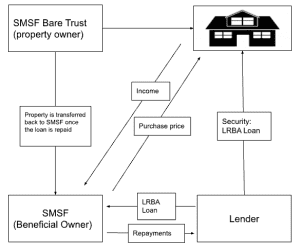
You are applying for a new loan so you must find the loan with the cheapest interest rate.
Why? The interest rate is the measure of the cheapest loan……..right?
Yes and No…..
The following is an adaptation of a real life example that we recently encountered. The example is real however the names have been changed. We have also provided a hypothetical comparison to compare the results, had the customers approached their loan in a different way.
Example One (Actual Scenario):
Doug and Jane are business owners. They run a successful business and 10-years ago they bought a commercial property (office) as an investment. The property was rented out to a third party and they purchased it as a long term investment.
- The property cost $750,000
- They had a 25% deposit and borrowed the remainder ($562,500)
- They received advice that they should pay interest only repayments, because it is an investment loan.
- They found a lender that offered them an interest only loan at a rate of 5% per annum. This meant that they only paid monthly interest costs of $2,343.75.
- They had an initial 5-year interest only term and at the end of the first 5-years, they rolled the loan over at the same interest rate for another interest only term of 5-years.
The property market in Perth has remained fairly stable over the last 10-years and the property has experienced nominal growth, but nothing significant. It is now worth $790,000
Doug and Jane have been reconsidering their property strategy given the low growth in value which means that they have not significantly increased their equity and they have approached us for guidance and options to refinance their loan.
Current value: $790,000
Current loan: $562,500
Equity: $227,500
Interest costs incurred to date: $562,500 x 5% x 10-years = $281,250
They have decided that they would like to fully payout the loan in another 10-years (20-years in total). So we worked out the monthly repayments:
$562,500 x 5% over 10-years = $5,966.19
Total interest payable = $153,442
By the time they repay the loan, it will have cost them:
Interest costs for the first 10-years: $281,250
Interest costs for the next 10-years: $153,442
Total interest $434,692
Principal $562,500
Total Loan Cost $997,192
Example Two (Alternative Scenario):
Dan and Jen are business owners. They run a successful business and 10-years ago they bought a commercial property (office) as an investment. The property was rented out to a third party and they purchased it as a long term investment.
- The property cost $750,000
- They had a 25% deposit and borrowed the remainder ($562,500)
- They received advice that they should pay principal and interest repayments because they would gain equity from day-one.
- They spent less time investigating loans and they found a lender that offered them a loan at a rate of 5.5% per annum with a 20-year loan term. Monthly repayments would be $3,869.37.
- The rate has remained the same and they have been paying the loan off since day one.
The property market in Perth has remained fairly stable over the last 10-years and the property has experienced nominal growth, but nothing significant. It is now worth $790,000
Dan and Jen have been reconsidering their property strategy given the low growth in the property value and they have approached us for guidance and options to refinance their loan.
Current value $790,000
Current loan $356,537
Equity $433,463
Total repayments to date: $464,324
Less current loan balance: $356,537
Interest costs to date: $107,787
In our discussions, they reconfirmed that they would like to fully payout the loan in another 10-years (20-years in total). They realised that they could get a better rate elsewhere, but they decided to stay with their current lender despite the higher interest rate. The remaining 10-years looks like this:
$356,537 x 5.5% over 10-years = $5,966.19 per month.
Total remaining repayments: $464,325
Remaining principal: $356,537
Remaining interest: $107,788
By the time they repay the loan, it will have cost them:
Interest costs for the first 5-years: $107,788
Interest costs for the next 10-years: $107,787
Total interest: $215,574
Tota principal: $562,500
Total Cost: $778,074
Dan and Jen will repay their loan in exactly the same time, but they will pay $219,118 less interest even though they paid a higher interest rate for the full loan term.
Conclusion and Summary:
With hindsight, when Doug and Jane looked at their strategy (after the first 10-years), they realised that they had been paying their loan for a long period of time and they did not have much equity because the property market had not performed well. They also realised that they had fallen into the ‘trap’ of looking for a lower repayment in the early days whereas they would have been better off ‘biting the bullet’ and repaying more in the early days. Whilst they have repaid their loan in the same time as Dan and Jen, they have paid a lot more because of the higher interest costs incurred due to the interest only repayments.
In looking at this scenario, we have deliberately made Dan and Jen’s interest rate higher to illustrate our point. The reality is that lenders generally charge a lower rate for principal and interest repayments.
Our mission is to help Australian Businesses to achieve great loan outcomes. Why not schedule a time to discuss your business loan requirements?
